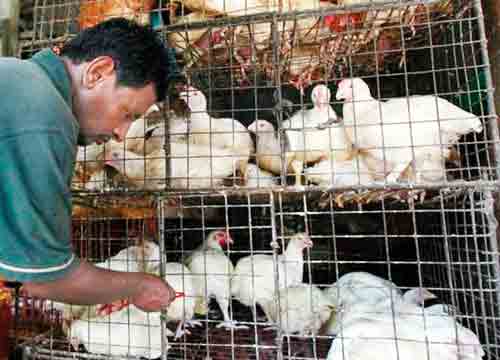Wednesday Apr 17, 2024
Wednesday Apr 17, 2024
Wednesday, 22 June 2016 00:00 - - {{hitsCtrl.values.hits}}
One has to admit that Sri Lanka’s chicken growers aren’t spring chicken at all. Within a single generation, they have made chicken the most readily available and economical source of non-plant protein in Sri Lanka, whereas it used to be considered a rare delicacy reserved for special occasions, just a few decades ago. 
Consumption of chicken too has been growing by leaps and bounds. Annual per capita consumption, which was barely 2.5 kg a decade ago, rose to 5.5 kg around five to six years ago and has now reached 8.2 kg. Since meat consumption worldwide has traditionally risen with growing prosperity, this figure is likely to reach 10 kg in the near future, given the rapid growth in Sri Lanka’s per capita income over the years.
Sri Lankan chicken producers have certainly played an important role in bringing about this dietary shift. They have closely followed and implemented global trends in technology and breeding practices, which has led to more efficient production and significant reduction in costs. For instance, the reduced growing period to produce a broiler chicken has resulted in less need for feed, less breeding space, man hours, equipment and a lower impact on the environment. To the Sri Lankan consumer, this has meant lower prices, relative to their increasing levels of income.
Chicken is popular as it is lower in fat and higher in nutrition than most other meats. In addition to significant levels of protein, it also contains Vitamins A, E, K, B6 and B12, Folate, Calcium, Iron, Magnesium and Selenium. Vitamin B6 lowers the levels of homocysteine, one of the key components linked to an increased risk of heart attack. Besides, chicken is also a good source of niacin that helps lower cholesterol, a risk factor for heart disease development.
The most important element in reducing costs, while improving the overall quality of chicken, has been the ‘vertical integration’ practiced by leading chicken producers such as Crysbro. Vertical integration refers to a company’s control over several or all of the production and/or distribution steps involved in the creation of its product or service. Crysbro for instance, carries out virtually every activity that is required to produce its farm fresh poultry. This includes the production of grains in its extensive farmlands to manufacturing poultry feed, state-of-the-art hatcheries, raising grandparent, parent birds and broilers, in addition to processing meat and packaging it in Cryovac film – right down to delivering the chicken to supermarkets and retail outlets. Crysbro has also opened its own feedmill plant, which makes it Sri Lanka’s first chicken producer to achieve full vertical integration.
Vertical integration has enabled Crysbro to combine different biosecurity and sanitation practices, testing for bacteria at breeder farms and hatcheries, housing technologies and feeding regimens to improve food safety. At its feed mill, feed is heat-treated to prevent the spread of bacteria between the feed and the birds. Such practices helps Crysbro provide its legions of valued customers with high quality, hygienic and fresh chicken, which is also an important factor in the export market.
Which brings us to the question ‘Will Sri Lankan chicken ever cross the road to the export market?’
The answer lies in the amazing transformation of the Brazilian chicken industry, which is worthy of emulation. In 2000, Brazil produced just 6 million tons of poultry meat. This figure had more than doubled to 12.6 million tons, capturing a significant portion of the global market. The corresponding figure for Sri Lanka is around 150,000 tons per annum. However, unlike Brazil, where per capita chicken consumption is a whopping 47 kg, the miniscule local consumption will allow our producers to export most of their produce.
In order to be competitive in the international market, Crysbro has invested in extensive automation, while streamlining operations and introducing innovative processes to improve the overall efficiency of its operations. Also, as a tropical country, Sri Lanka has been spared the costs of central heating, while our limited geographical spread keeps transportation costs under control. This makes it viable for chicken producers like Crysbro to vie for the export market
However, the availability and cost of feed remain an issue with most chicken producers, as the import of maize, which is an important ingredient in chicken feed, remains restricted. This hampers large-scale expansion needed to achieve the economies of scale required to enter the competitive export markets. The ceiling price imposed on chicken also reduces the margins of producers, thereby restricting their capital needed to finance expansion.
While encouragement provided by the Government, by way of tax concessions on capital equipment imports, promotion of investment in grandparent bird production and local inputs for feed production are important steps in the right direction, more incentives are needed for our producers to tap into the lucrative exports market.
Will our chicken ever cross the road in this direction? The answer is a resounding ‘Yes’, if a favourable and sustainable policy climate and direction can be evolved, along with sufficient motivation and encouragement for Sri Lankan chicken producers.